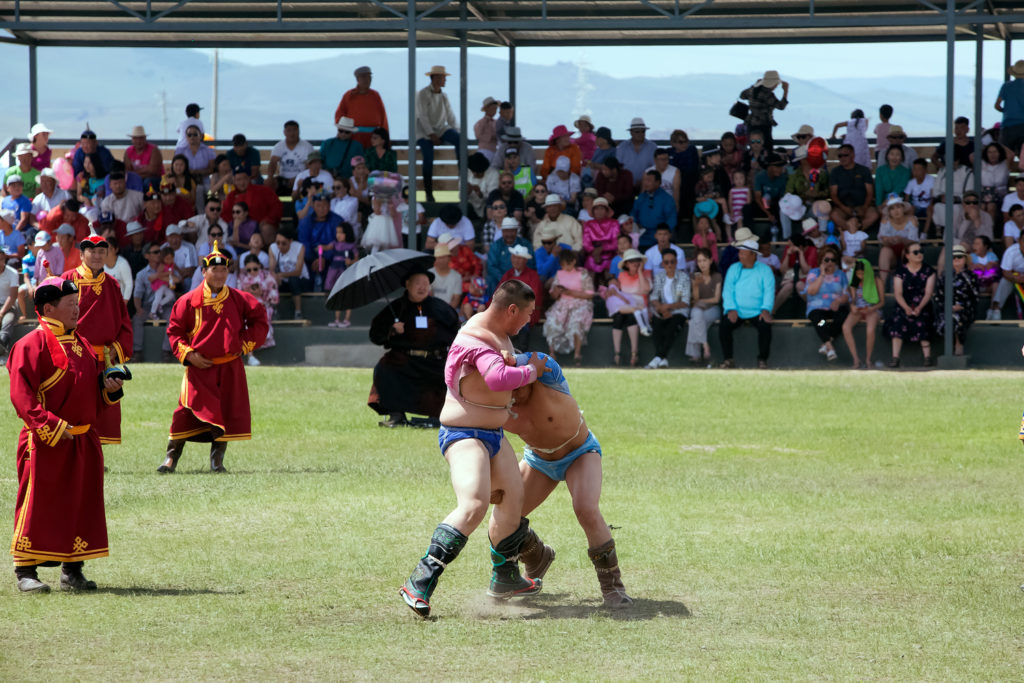Mongolia, a land of indomitable spirit and rugged landscapes, has a rich cultural heritage that permeates every aspect of life in this vast country. Sport is no exception. The competitive ethos of sports in Mongolia has been shaped by centuries of nomadic life, characterized by horseback riding, hunting, and a deeply rooted sense of community. This article provides an in-depth exploration of the role of sports in Mongolia, including both traditional and contemporary sports.
History of Sports in Mongolia
Traditional Mongolian sports have been integral to the Mongolian way of life for centuries. They evolved from the necessities of the nomadic lifestyle – strength for combat, precision for hunting, and horse riding skills for travel. Today, these traditional sports are not just reminders of Mongolia’s nomadic past but also symbols of national identity.
Wrestling – The National Sport of Mongolia
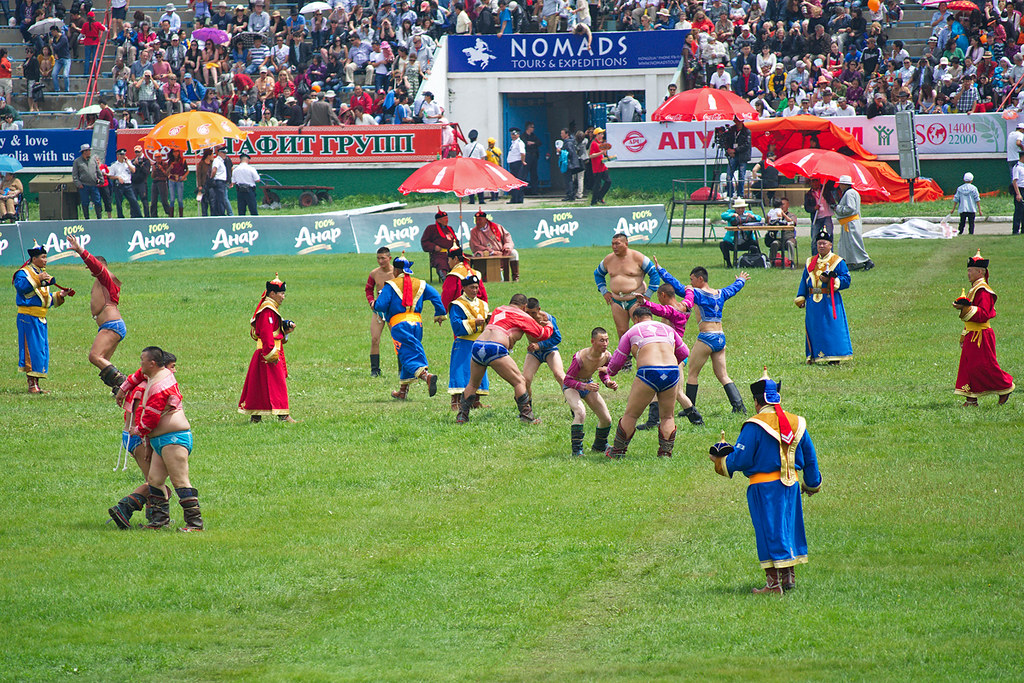
Wrestling is not just a sport in Mongolia, it is a cultural phenomenon.
Usually, 512 wrestlers compete for national championships, 1024 during special cases, and it’s a process of elimination. Weaker wrestlers with a low chance of winning are paired with stronger wrestlers so that at the end of the final match, the best of the best are competing.
Sometimes a single wrestling match between 2 participants can take a whole day, so it’s a sport of not only strength but also stamina, patience, and strategy.
- Overview and rules: Wrestling, or “Bökh,” involves two competitors aiming to make each other touch the ground with anything other than their feet. There are no weight categories, and matches can last from a few seconds to several hours.
- Significance and cultural implications: Wrestling plays a significant role in social and cultural events, with the grandest matches held during the Naadam Festival, Mongolia’s largest and most celebrated festival.
Archery – A Sport with Deep Historical Roots
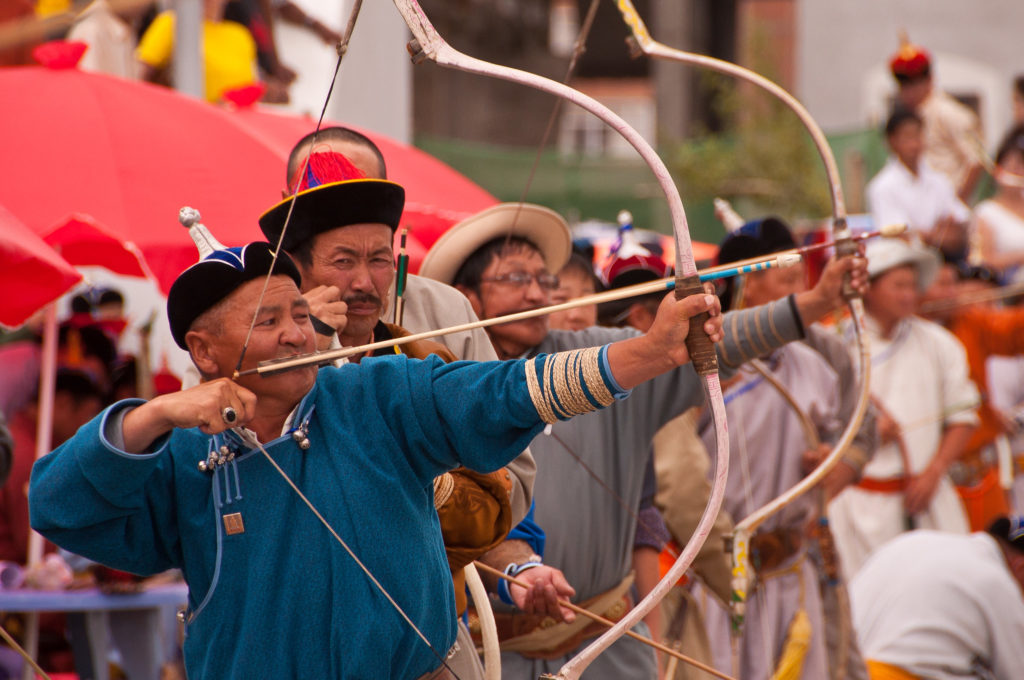
Archery is one of those sports that have been important to Mongolian culture and history. Boys from a very young age were usually trained to hunt and provide for their families for survival.
Nowadays, there is no such requirement, but some people do pick up archery and compete in the Naadam Festival. Though it’s not as popular as wrestling and horse racing, it does require a lot of practice to become good at the sport.
This is the only sport in the Naadam Festival that allows females to compete.
- Overview and rules: Mongolian archery involves shooting arrows at a wall of small cylinders from a distance of 75 to 100 meters. Both men and women participate, with the women shooting from slightly shorter distances.
- Traditional archery competitions and events: Archery competitions are integral to the Naadam Festival, with local competitions also held throughout the year.
Horse Racing – Embodying the Nomadic Spirit
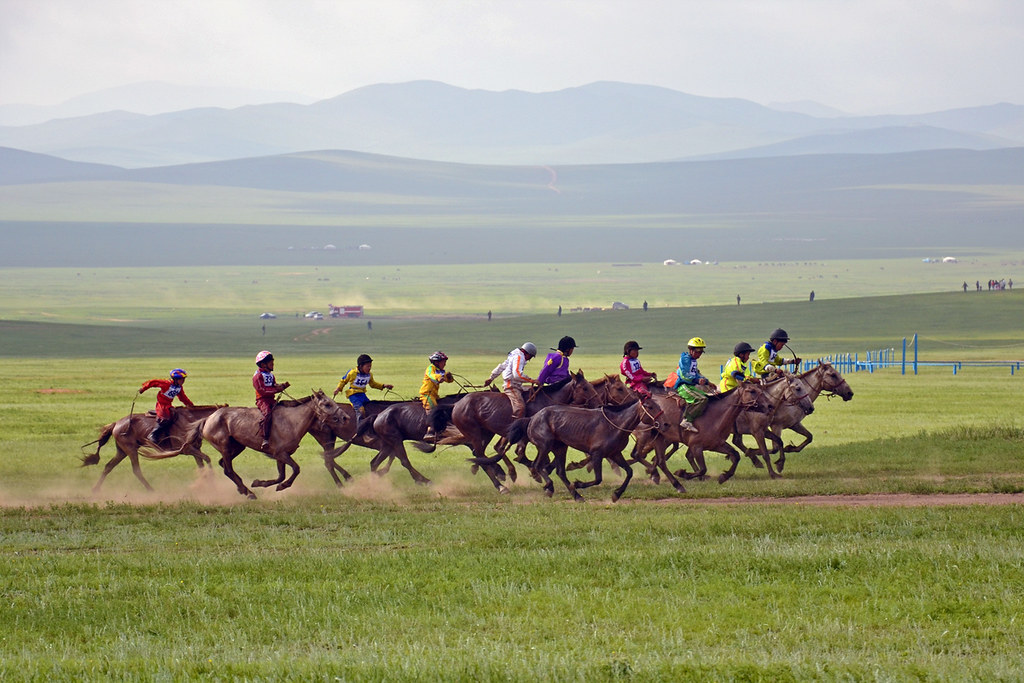
To finish the Naadam Festival competitions, we have horse racing. It’s not a derby or a short sprint, but rather a long-distance that requires all-year-round preparation for the athlete horses. They are fed, trained, and cared for by people called Uyaach or wranglers for English translation.
The reason why horses are the most decorated animal in Mongolia is that they were an integral part of the Mongolian army during the empire and were one of the big reasons why Mongolian armies were so effective.
- Overview: In stark contrast to Western racing, Mongolian horse racing involves long-distance races across the countryside, with children as young as five years old serving as jockeys.
- Cultural importance: Horse racing has deep cultural and spiritual significance, with horses considered sacred animals in Mongolian culture.
- Naadam Festival: The annual Naadam Festival features the most prestigious races, with horses competing in categories based on their age.
Ankle-Bone Shooting – A Unique Mongolian Game
Ankle-bone shooting, a traditional Mongolian game, is both a sport and a means of fortune-telling. Participants flick carved sheep ankle bones at a target, with the manner of landing signifying different omens.
Modern Sports in Mongolia
Beyond traditional sports, modern sports like football, basketball, judo, and boxing have gained popularity in Mongolia.
Sumo
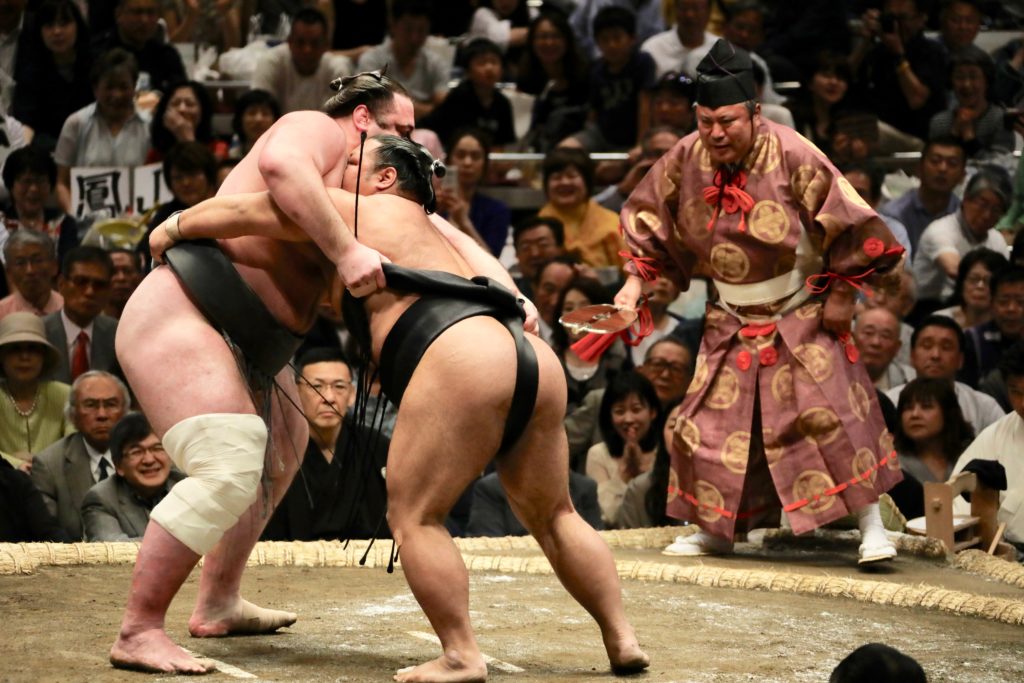
If you watch Sumo, you would know that a lot of Mongolian sumo wrestlers have dominated the sport for decades. Famous sumo wrestlers include Dolgorsürengiin Dagvador AKA Asashoryu, Munkhbat Davaajargal AKA Hakuho, and Davaanyam Byambadorj AKA Harumafuji.
While not as popular as Mongolian wrestling, sumo wrestlers are still considered national heroes and during sumo tournaments, you will find a lot of Mongolians tuned to the sports channel to cheer for their favorite sumo wrestlers.
Basketball
Basketball is a sport that has been becoming very popular in Mongolia throughout the last few decades. Although the Mongolian national team is far from competing with the world, it’s still a sport that captures the attention of many teenagers and college students.
Usually, you will see young boys playing basketball out in the yard or rentable courts day and night. It’s a good activity to pass the summer months and stay active.
Some foreign athletes from around the world do get scouted and it isn’t much of a surprise to see very tall athletes, mainly Africans and Black Americans to be playing for some Mongolian teams.
Football
Football is another sport that is becoming very popular. Though it’s not as accessible as basketball, high school and college students do sometimes form teams and compete with one another on an agreed-upon sum of money.
It’s still a long way until Mongolian athletes and teams compete internationally, but over the recent years, there have been improvements and sponsorships for the sport.
Boxing
Mongolians do very well in boxing, in fact, 1 of the 2 Olympic gold medal titles is in boxing. Enkhbat Badar-Uugan became a national sensation and a hero when he won the 2nd Olympic gold medal to be recorded in Mongolian history.
It has encouraged a lot of young kids to pick up boxing and since the 2008 Olympics, a lot of Mongolian athletes have gone to win world championships titles and many other Olympic medals; just no gold so far.
Judo
Lastly, you have Judo. This was the sport that graced Mongolians with the first Mongolian gold medal in Olympic history. Naidang Tüvshinbayar won the gold medal in the heavyweight division in Judo and it brought a night full of celebration.
People were honking their horns through the streets, random strangers kissing one another, overall a night to be remembered. Like boxing, this has inspired younger generations to pick up judo and Mongolian judo athletes have gone on to win many world titles.
Do Schools Have Sports Teams?
Yes, some private schools and public schools have sports teams in Basketball, Football, and other team-oriented sports, but for individual athlete-based sports, usually students join clubs and teams that are separate from schools. Such clubs and teams have fees and are sometimes inaccessible to students from low-income families.
Do Colleges Have Sports Teams?
Besides teams that are based on academia, there isn’t much funding and sponsorship for athletes in college. Aspiring athletes have to sign up with clubs and teams on their own, hire their own coaches if they want to turn pro.
Possibilities of Going Pro in Mongolia
Becoming a professional athlete is risky in Mongolia. Even if you become a pro, sometimes the pay is not enough to sustain a normal lifestyle. There are many hurdles that aspiring athletes face. There isn’t much support from the government nor schools for young athletes to develop themselves since they have to sign up with independent training facilities, and even if they sign up with independent athlete schools, the equipment, funding, etc for those programs are not the best.
The sports industry in Mongolia is still developing and it is a long way until Mongolians are able to compete globally in sports besides, sumo, wrestling, judo, and boxing.

